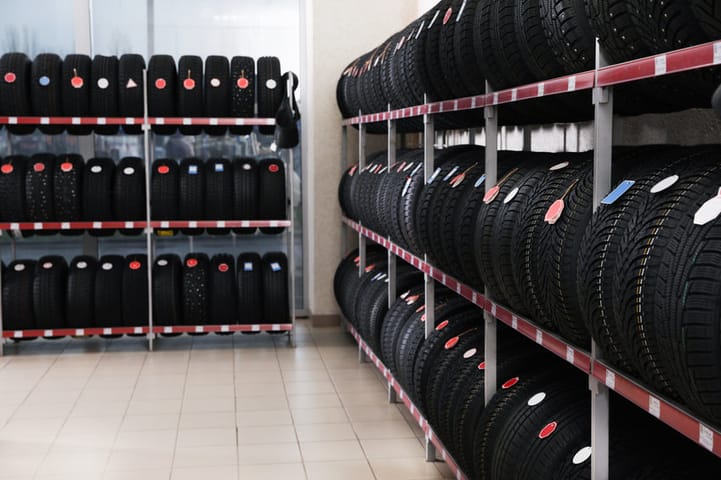Specialist GMC Tire Service: Depend On Our Experienced Specialists for Quality Care
Specialist GMC Tire Service: Depend On Our Experienced Specialists for Quality Care
Blog Article
Tire Replacement: The Art of Selecting the Right Tire Size
Choosing the ideal tire dimension is a vital facet of preserving ideal efficiency and safety for your automobile. From comprehending just how tire dimension specs are established to acknowledging the effects of incorrect dimensions on your lorry's handling and performance, the journey to locating the best tire dimension is a nuanced one.
Relevance of Correct Tire Dimension
Choosing the suitable tire dimension is important for guaranteeing optimum performance, safety and security, and performance of your automobile. The appropriate tire size directly impacts numerous elements of your driving experience. Among the vital reasons that tire size issues is due to the fact that it influences the total handling of your lorry. Tires that are as well tiny or also big can bring about inadequate grip, problem in steering, and a general decline in security, especially throughout tough roadway conditions. Moreover, using the right tire dimension can additionally enhance fuel effectiveness. Effectively inflated tires that match the manufacturer's recommended size can reduce rolling resistance and boost gas mileage. In terms of security, having the correct tire dimension guarantees that your car can effectively grasp the road, brake efficiently, and maneuver smoothly to avoid mishaps. Taking the time to select the ideal tire size for your car is a fundamental action in maintaining its efficiency and safety and security on the road.
Factors Impacting Tire Dimension Choice
An essential factor to consider in determining the suitable tire size for your lorry is recognizing the various aspects that affect this option. One vital variable is the maker's recommended tire dimension. This details can normally be found in the proprietor's handbook or on a sticker label inside the chauffeur's side door jamb. Differing the recommended tire size can affect the speedometer precision, fuel efficiency, and overall performance of the car.
Another variable to consider is the type of driving you do. If you frequently drive off-road or in challenging weather, you may require a tire with a various size or step pattern contrasted to someone that primarily drives on highways. The terrain you drive on also contributes in figuring out the optimal tire size. Bigger tires with an extra hostile walk pattern may be needed for muddy or rocky terrain.
Additionally, the size of your wheels can restrict the options for tire dimensions. It's important to guarantee that the tires you choose work with your wheels to stop any type of safety threats or efficiency issues. By very carefully taking into consideration these factors, you can pick the appropriate tire dimension that best suits your driving requirements and vehicle requirements.
Recognizing Tire Size Specs
Tire size specs offer vital details regarding the measurements and qualities of a tire. Comprehending these specs is vital for picking the Going Here appropriate tire for your vehicle. The tire size is typically shown on the sidewall of the tire and is stood for by a mix of numbers and letters. A typical tire dimension requirements more might be P215/65R15. In this example, "P" denotes the tire kind, "215" stands for the tire size in millimeters, "65" is the element proportion (the ratio of the tire's elevation to its width), and "15" suggests the size of the wheel in inches that the tire is created to fit.
Additionally, tire size requirements may include tons index and rate rating. The tons index indicates the maximum weight a tire can sustain, while the speed rating indicates the maximum speed ability of the tire. By recognizing these requirements, you can make sure that the tires you select are compatible with your car's demands and offer optimum performance and safety when driving.
Effects of Incorrect Tire Size

Incorrect tire sizes can also affect gas effectiveness. Using tires that are not suited for your vehicle can alter the speedometer reading, leading to incorrect gas mileage estimations. Furthermore, dissimilar tire dimensions can place extra strain on the engine and transmission, possibly reducing the total fuel economic climate of the vehicle.

Tips for Selecting the Right Tire Size
Selecting the appropriate tire dimension for your car is crucial for making certain optimum efficiency and security on the roadway. To help in selecting the best tire size, think about the following tips. By complying with these tips, you can select the ideal tire dimension to enhance your automobile's performance and security.
Verdict
Finally, selecting the appropriate tire size is crucial for ensuring optimum efficiency and security of a vehicle. Elements such as vehicle type, driving problems, and producer recommendations have to be taken into consideration when selecting the appropriate tire dimension. Incorrect tire size can lead to adverse results on handling, gas efficiency, and overall security. By comprehending tire dimension requirements and adhering to tips for selection, chauffeurs can make educated choices to enhance their driving experience.
From comprehending exactly how tire dimension specifications are figured out to recognizing the results of incorrect sizes on your car's handling and efficiency, the trip to finding the best tire size is a nuanced one.Tire size specs offer vital info regarding the dimensions and attributes of a tire. The tire dimension is commonly presented on the sidewall of the tire and is stood for by a combination of letters and numbers. morris tires. In this example, "P" denotes the tire type, "215" stands for the tire size in millimeters, "65" is the element proportion (the ratio of the tire's elevation to its size), and "15" indicates the diameter of the wheel in inches that the tire is made to fit
Tires that are as well small may result in minimized security, especially during high-speed maneuvers, while oversized tires can cause massaging versus the automobile's body components, leading to possible damages.
Report this page